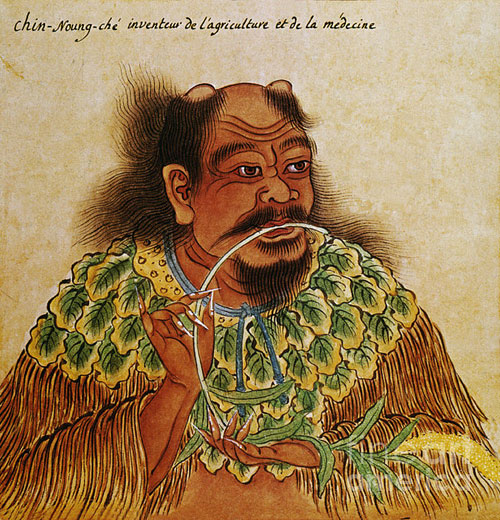
Legends about the appearance of tea & ndash; great multitude. And this is not surprising, because & laquo; tea story & raquo; is rooted in deep antiquity, and we can learn about that time only from traditions. But despite the diverse stories, everyone agrees that the drink's birthplace & ndash; it is & laquo; Celestial & raquo;.
One of the beloved stories tells about the wise monk Tcai-ye, who was a scientist who pored over treatises.
The need to sleep prevented him from giving himself up to work. Then, in despair, he cut off his eyelids and threw them away, hoping, thus, to increase the duration of his work. And from the eyelids grew tea bushes, the leaves of which were covered with delicate white down, just like gray cilia & ndash; & laquo; buy-xao & raquo;, which later led to the name & laquo; baikhovy & raquo;.
There is another legendary version of the origin of tea, which is more practical.
In the 3rd millennium BC. e., the great emperor Shen Nong ruled in China.
On his account was a huge contribution to the discovery of agriculture, the development of crops such as rice, wheat and millet, the introduction of salt into food, as well as many educational and medical innovations. And one of them was an order to boil water before use.
Once, on a hot afternoon, the emperor rested on a mountain slope, sitting under shady trees. & nbsp; A boiled water cooled nearby in a bowler hat.
Wrinkled by the heat, Shen Nong fell asleep, and when he woke up, he saw several leaves in the bowler hat that fell from a tree.
The resulting infusion surprised the ruler so much with its fresh and light taste, bright aroma and invigorating effect that such a drink was ordered to be served to him daily.
This is how huge tea plantations and, in fact, the tea culture itself arose.
Over time, it moved from the imperial house to huts to commoners, and then spread to other Asian countries, and gradually reached Europe: historical sources say that in Europe it was possible to buy tea in the XIV century.
Tea came to India from British colonists who experimentally planted tea bushes secretly exported from China.
Nobody thought India's high-altitude climate would like tea so much & ndash; he began to literally shoot flushes, giving a high harvest.
Since the mid-19th century, tea began to be actively cultivated, spreading to Ceylon.
Great assortment of tea from around the world and all kinds in our online store
Chinese Tea
Indian Tea
Ceylon Tea
Black Tea
Green Tea
We sell tea directly from the manufacturer, so we guarantee high quality and excellent prices.
There is a 30% discount on purchases of 500 grams or more.
View the full range of tea here.
How did tea come about in Russia?
The neighborhood of the Russian Empire with China made it possible for Russian merchants to get acquainted with tea among the first, at the end of the 16th century.
There is a version that already in 1618 Tsar Mikhail Fedorovich Romanov received several cases of tea as a gift from the Chinese ambassadors.
In addition, Ambassador Ivan Perfiliev pleased the royal chambers with tea in 1665, after which the & laquo; Nerchinsky treatise & raquo; was signed between China and Russia in 1689; on the establishment of free trade between Russia and China.
Thus arose the & laquo; Great Tea Way & raquo; about 9,000 miles or 16 months of travel, which lasted about 200 years.

Later there were attempts to cultivate Camellia sinensis bushes: the idea was unsuccessful in Crimea, but in Georgia they began to grow and then export & laquo; Georgian tea & raquo;.
Then the well-known & laquo; Krasnodar tea & raquo; appeared in the North Caucasus.
According to the Chinese, not a single national culture could even come one step closer to understanding this divine drink. And the whole world agrees with them, because China has the palm for the best tea.
Interested in Chinese tea novelties, exclusive and popular varieties, we invite you to evaluate our assortment.
Now & nbsp; it is not difficult to buy tea in Moscow & nbsp; , because & laquo; Russian Tea Company & raquo; is ready to offer its customers more than 500 different types of tea products.
